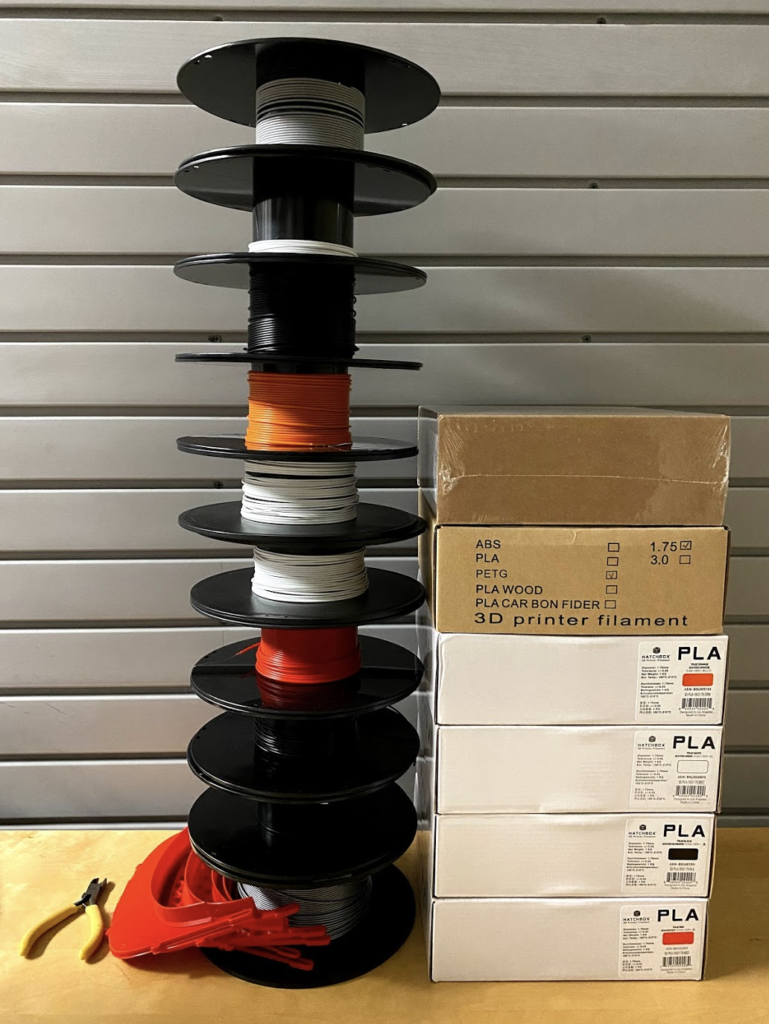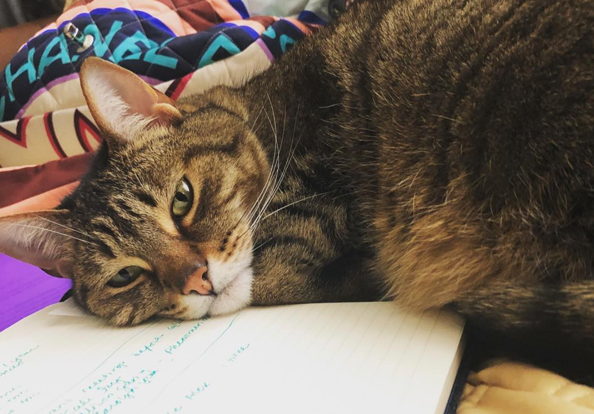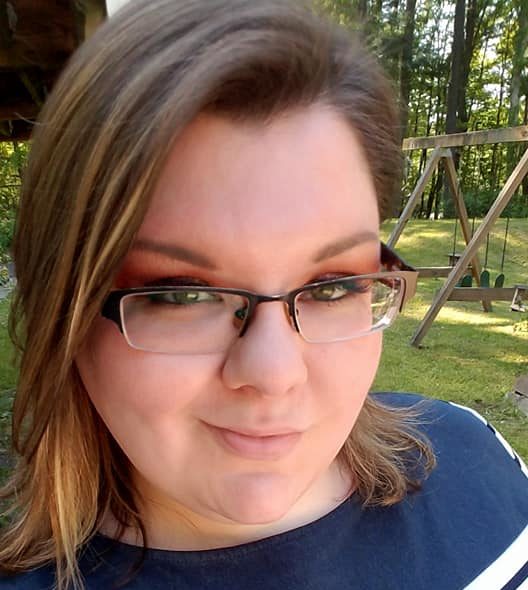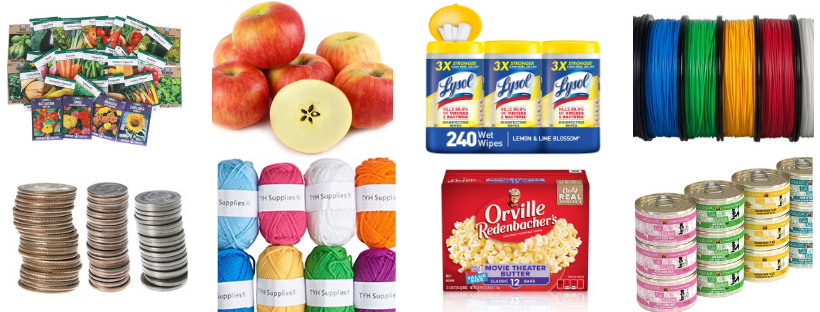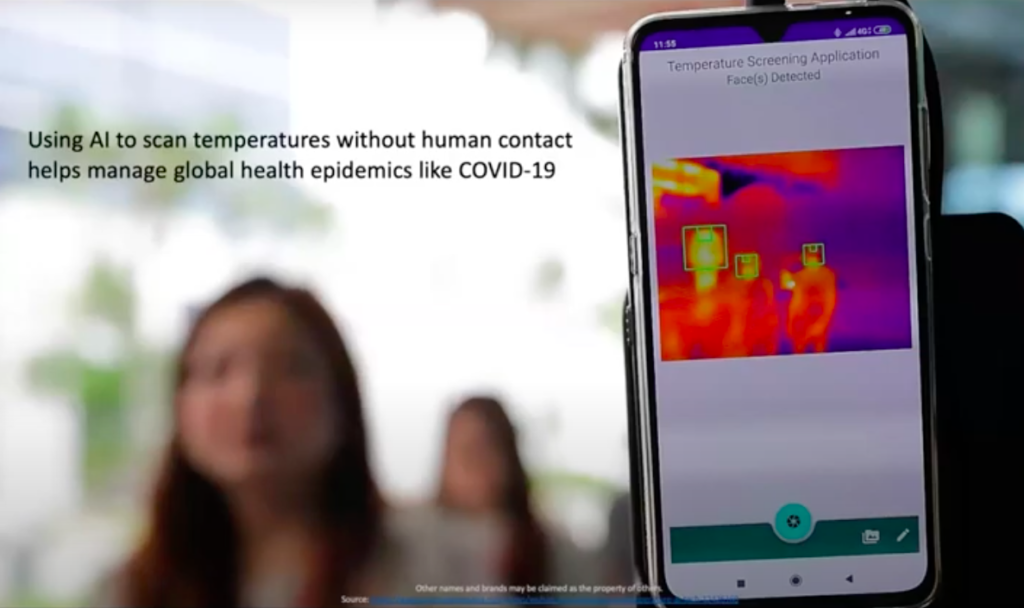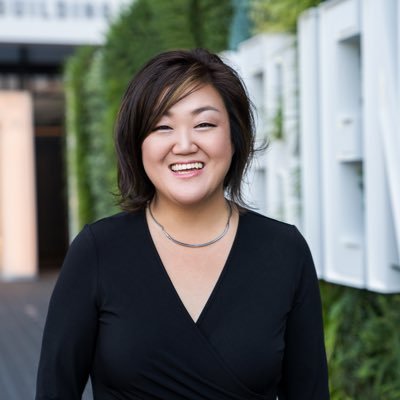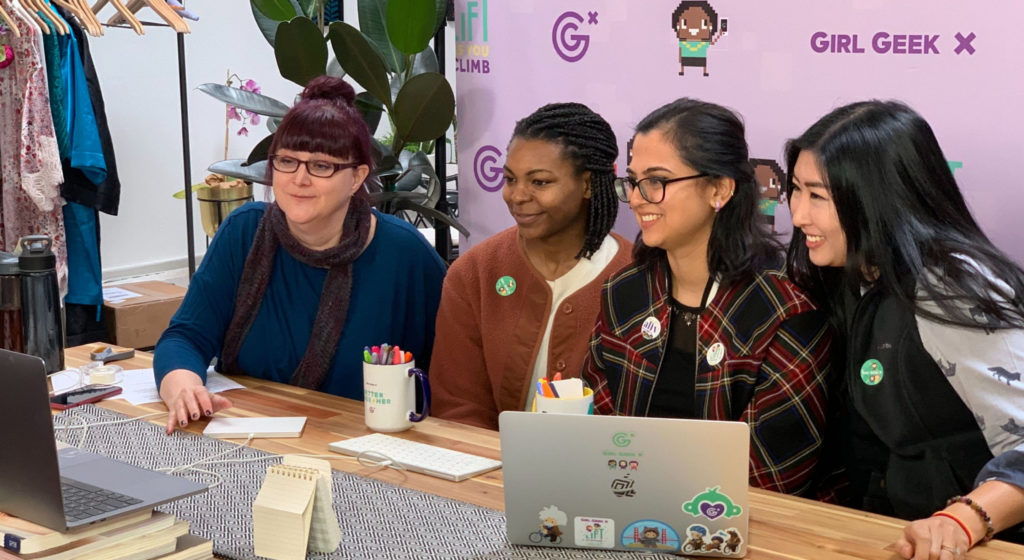Transcript of Elevate 2020 Session
Rachel Jones: All right, so we’re about to start our final panel of the conference. For this one we’ll be speaking with some veterans in tech. So, with diverse backgrounds, careers, roles, and branches, vets are hardly a monolith. There’s so much variety to their stories, but one thing that they definitely all have in common is resilience. So, for this panel, these vets in tech will share the challenges and upsides of their amazing journeys. I’ll hand it off to our moderator, Tiana Clark, who is a director of marketing at Microsoft. Tiana?
Tiana S. Clark: Hello. Can you all hear me okay?
Rachel Jones: Yep.
Molly Laufer: Yes.
Tiana S. Clark: Awesome. I’m super excited to be a part of Girl Geek X today, especially on a topic that is near and dear to my heart. I’m glad that we just have an opportunity and a forum to be able to discuss this. I’m really excited. I think it would be good to start going around and having everyone tell a little bit about your branch, your role, enlisted or officer, and a career highlight or two. So we’re taking a step back and just reflecting on our military experience. I’ll go first. I am prior US Air Force. I was a Staff Sergeant Intelligence Analyst. And a couple of highlights, I was deployed for Operation Iraqi Freedom. I won Airman of the Year, and I’ve flown in an F-15 Eagle.
Tiana S. Clark: So that’s a little bit about my background. Let’s go ahead and start with Molly.
Molly Laufer: All right. Hi everyone, my name is Molly Laufer, and I spent four years as a Service Warfare Officer in the United States Navy from 2007 to 2011. During those four years, I spent time on one of the Navy’s smallest warships, which is a frigate. I served as the Ordinance Enforce Protection Officer doing counter-narcotic terrorism operations. Then I also spent a few years on the Navy’s largest warship, which is an aircraft carrier. I deployed on the USS Nimitz in support of Operation Iraqi Freedom on an Operation Enduring Freedom.
Molly Laufer: I think some of my highlights include things like swim calls and fishing expeditions off the back of a warship on a Sunday afternoon, as well as spending time … I was the only woman who was a battle watch captain on an Iraqi oil terminal in the North Arabian Gulf. So working with our ally partners and our Bahrani interpreters was really a highlight of my career in the Navy, because I didn’t expect to be somewhere that was not a warship during those four years.
Tiana S. Clark: Amazing. Thank you. Theresa?
Theresa Piasta: Hi everybody. My name’s Theresa Piasta. I served in the Army for six years between active duty, four years, and then Upstate New York in Fort Totten. After my active duty experience, I also did active reserves. So I saw it on both ends, but within the service I was stationed at Fort Hood, Texas. Then we deployed to Iraq from ’08 to ’09. We were gone for over 14 months. There, I was in charge of all base offense and access control. So at the age of 24, 25, I had to put on a lot of different hats and do things and teach myself new skills very quickly.
Theresa Piasta: I think that that experience that the military puts leaders in at a very young age was just such an amazing experience, that I think all of us here in this panel probably have those different tidbits of when you’re just put in a situation and you’re expected to do a lot with a lot of constraints as well. So that experience in general, leading base offense and access control on a base that had a 27 kilometer perimeter and thousands of people residing there has set me up for success for the rest of my career.
Theresa Piasta: After I got back from Iraq, it was the financial crisis, so I turned on that resilient leader hat and found and put grid on again, and found a role in the financial services industry on Wall Street. Since then, after six years I moved to the Bay area. I’ve been building a tribe called Puppy Mama, and we’re now over 25,000 people. So, I think with [crosstalk 00:04:42] Yeah, with the military. So, the experience was amazing. Learning those technical skills early on and having that confidence that you can set me up for success to be in the tech industry. I’m looking forward to answering anyone’s questions.
Tiana S. Clark: Awesome. We’re going to get into a lot more, everyone, about our transition out of the military. So we’ll learn more about Puppy Mama and that whole thing, but thank you for sharing. Okay, Claudia, tell us about your military experience.
Claudia Weber: Hi everybody, this is Claudia Weber. I am a US Navy veteran. I was in the Navy for eight years. Five and a half years active duty, and I was stationed at the Navy and Marine Corps Reserve Center in New Orleans. A highlight for me was being involved in a staff command, seeing the operations real time up front, and in my career, seeing the work I did come full circle during Desert Storm when we had to recall the reservists to active duty and being a part of that team in the Northwest that worked 24/7 during our recall period. So, it was really fascinating to see us going live with everything we had trained to do at that point.
Tiana S. Clark: Wow, thanks for sharing that. All right, Melissa, last but not least.
Mellisa Walker: Hello everyone. My name is Melissa Walker. I spent four years in the Marine Corps, enlisted from 2011 to 2015. I was stationed at Camp Pendleton in SoCal, kind of near San Diego, working in various jobs in the aviation supply field. They supported workups and deployments for the squadrons on the airfield. I was working with the logistics for the supplies that were sent out, as well as personnel. I was also in an accounting division that was keeping track of all the fuel receipts as well. I spent a year and a half working at Squadron 267 as a logistics liaison between that squadron and our supply warehouse as well, so that’s mine.
Tiana S. Clark: I just love that you’ve got these strong women who have done some really amazing things in the military. And as was said before, at young ages. Coming in, I was 19 and I’m training pilots. It’s just a level of responsibility and a level of accountability and knowledge, and being able to take that on and to transition it really outside of the military into a tech career field, I think is very, very impressive. So I want to take some time to help people understand what that transition was really like. Because I don’t know about you all, but it wasn’t an automatic jump for me.
Tiana S. Clark: I’ll tell you a little bit more about my story, but I want to let you ladies speak about it first. But let’s just hear what it was like getting from where you were to where you are today. Let’s go ahead and start with Melissa.
Mellisa Walker: Sure thing, thank you. So my journey into tech was like you said, and like many others on this panel, not premeditated at all. I was actually in my last semester of college finishing up my Bachelor’s degree up here at Cal State, and my veterans counselor sent out an email with an opportunity for a veterans directed internship with none other than the company Workday. So if any of you were able to catch the morning speaker, we had Carin Taylor, which is our fearless belonging and diversity leader here.
Mellisa Walker: The internship is called CAP, which stands for Career Accelerator Program, for anyone who’s interested in kind of learning more. So I applied for the internship, not really knowing what I was getting myself into. At the time I had spent zero time in the tech world or the corporate world. My life was previously consumed on finishing school, working retail during that time, or being in the military before that. The internship itself doesn’t tell you much of what to expect, because all the applicants can be placed in different roles based on what teams have head count.
Mellisa Walker: So they can’t really tell you what kind of description of what you’re going to be doing. So, I landed the internship, which went on for four months. They just put you in a real job, so you’re not treated like an intern. You’re treated like a new employee. This was not an easy process for me at all. I was 27 at the time, and I felt like it was teaching an old dog new tricks with all these new terms and a different mindset that I had to learn. So I know that 27 is not that old, but coming into something totally new made it feel like I was really behind the curve, especially from my peers.
Mellisa Walker: Right now I work on a team called Implementation Tools, which deals with data migration tooling that customers use within their Workday product. Also, we are the gatekeepers of all sorts of data that goes into the factory default data that is delivered to the field. So all these different teams put in their new functionality, and then we’re the ones who have to double check to make sure that it works properly for our data migration tooling.
Mellisa Walker: So long story short, very technical role. It’s been very hard to adapt, but I just celebrated my two year work anniversary, so I’m definitely still trying my hardest to be successful here, because Workday is great.
Tiana S. Clark: That is awesome. So just to recap, so straight from military and your first role is at Workday. How long do you feel that it took you before you really felt like you were in your zone, like you’ve got the information, you’re ready? How long do you think that took overall?
Mellisa Walker: Probably in two years.
Tiana S. Clark: Right?
Mellisa Walker: I’m not going to lie, it took a solid year for me to figure out what was going on. I had other people around me that had the same kind of mentality, so it was hard for me, but easy to see that other people were going through the same thing. But yeah, that was a long transition.
Tiana S. Clark: Yeah. Yeah, I totally understand. All right, thanks for sharing. Molly, you want to talk about your transition a little bit?
Molly Laufer: Sure, yeah. Like Melissa said, the transition from the military to the tech world certainly did not come as maybe smoothly as I look back and remember it with rose colored glasses. I left the military in 2011, and moved up here to the Bay area. It was like a fish out of water, complete culture shock. You could’ve dropped me into another country. The vernacular was different. The acronyms were different. I mean, everyone on this panel knows that the military has a lot of acronyms, and they were all very different from the startup world.
Molly Laufer: You know, what’s private equity? How does that differ from venture capital? What’s a cap table? How do I negotiate equity? What’s the difference between a Series A and a Series D? I mean, I felt like I was drowning in new information. It was honestly like being a 22 year old ensign, showing up and having to learn a complete new navigation system on a ship.
Molly Laufer: So when I joined Silicon Valley, I thought, “Well, I’ll just do what everyone does and I’ll go work at a big tech company, because that’s just what everyone does right away.” I was, again, very clear-eyed, very naïve. I submitted my resume to a lot of different places, and I kept hearing the same feedback over and over again. Which was, “Your background sounds really interesting, but we don’t see an obvious fit. Our company is at a stage such that we need people that are experts in a specific area and aren’t just kind of general managers or general figure-it-outers.”
Molly Laufer: That was really demoralizing in the beginning, and so the advice that I had received from someone was, “Maybe you aren’t really in a position to be able to go to a company where they need someone with very specific experience. Maybe you should translate your jack of all trade, master of none experience from the service warfare community into the startup space.” So for me what that looked like is I actually ended up joining a eCommerce direct-to-consumer snack company as the first employee, where for the first several months I was a jack of all trade, master of none.
Molly Laufer: There was really no job that I wasn’t willing to do or to figure out or to get my hands on.
Tiana S. Clark: What a perfect transition for you, Molly. Gosh.
Molly Laufer: Exactly, exactly.
Tiana S. Clark: Yes.
Molly Laufer: It was a really good … When you kind of said it out loud, it really made sense. Then from there, was able to as the company grew, really focus my interests and experience into customer acquisition. So I’ve spent the last nine years really, really focusing customer acquisition. But it didn’t start out where I am today. I really had to kind of take that ability to get my hands on a lot of things, be willing to learn new things, and be willing to just get involved in every job. And really using that experience from the military at a very, very early stage startup.
Tiana S. Clark: Wow. Now, I have to ask one followup question for anyone in the audience who’s curious. How did you meet this founder, or how did you get to be employee number one?
Molly Laufer: Really good question. It certainly isn’t from submitting your resume to a number of different job boards is what I found. It really came down to a friend of a friend of a friend. It was a former coworker of my husband’s coworker, who happened to be a venture capitalist. I said, “I’m new here. Like, literally new into Silicon Valley. Can you tell me about the industry? What kind of investments do you make? These are the types of industries that I’m interested in. Because, again, I have no tech experience in any one specific industry, so here’s what I’m interested in. Do you know anyone who maybe has a company who’s doing that?”
Molly Laufer: He said, “Actually, I do know someone. A friend of mine is actually starting a snack company. You should talk to him.” I was obviously very grateful for that introduction, and that introduction is actually what led to that four year career, that experience at the startup. But it certainly wouldn’t have come from just applying myself to jobs. It certainly came from putting myself out there and being willing to have conversations with people where I didn’t really know what to say, but honestly more importantly, it was because of people who were willing to have those conversations with me, too.
Tiana S. Clark: That’s amazing. So I hear a lot of that using your network, which we’re going to circle back to as well. All right. Let’s hear from Theresa.
Theresa Piasta: Unmuting myself. Molly, I love everything you just shared, because I have found myself similarly, and actually recently I took a Gallup CliftonStrengths assessment test. Anyone in the audience who hasn’t taken it, it’s been really helpful to have discussions, because to discuss my military days, yes, I served from 2006 to 2012. That included two years of active reserve time as well. There’s something that always goes back to my military training and the DNA of being a former military officer. I was a Captain, as I said before, in the US Army. Is number one, on that Gallup assessment, says activator. Everything that Molly just said is pretty much me in a nutshell, and other veterans I’ve spoken to as well.
Theresa Piasta: So I love to be able to do a lot of different things. I love to be able to be impactful in different organizations. Number three on the list is significance, which I also look at, hey, I also love to be part of missions that I am very proud to be part of. So as I navigated my career after the military, those were things that as I’ve recently took that test, it started to … I understood a lot better how to communicate the overall military experience to other people, is because being an activator, I love learning new things. I love learning new skills, and so right after the military went to convertible bond sales and trading desk.
Theresa Piasta: If anyone has ever tried to be on a trading desk, it’s a pretty … very dynamic environment where you have to make quick decisions under pressure. I stayed in the financial services industry for multiple years, but as I moved back to the Bay area with my husband, I’m from Sonoma County. Anyone know the wine country? I’m from Santa Rosa. I was exposed to all the tech out here, and this was four years ago, that I was inspired, as the jack of all trades type activator, and I love to learn new skills. I’m passionate. I was inspired to start a business three years ago called Puppy Mama.
Theresa Piasta: There’s a lot of negativity in social media is what I have found three years ago, but I saw something beautiful where people were connecting with each other in a beautiful and positive way through dogs, and creating a community of love and support for other women. But since then, being a founder of a pet tech company, I’ve had to really learn new skills constantly, and design. In order to grow a business bootstrapped, I’ve had to be very crafty. I go back to my military days of, hey, constantly needing to learn new skills, be resilient, and keep moving forward.
Theresa Piasta: Everything that Molly said is pretty much what my experience in a nutshell, where what organizations hopefully will recognize that from people who come from the military. Because we do have a lot of skills, and we can be put in a lot of different environments because we are resilient leaders, I would say about military folks in a nutshell.
Tiana S. Clark: Absolutely. And understanding the transferable skills that you have, which we’re going to touch on, is so critically important, and being able to communicate that, which we’ll get to. But I also like what you said about the StrengthsFinder. So, I’ve taken that as well. If you all haven’t done that, it’s like $25.00 or something last time I checked, but it does give you a really clear indicator of what makes you tick, like who you are to your core, which will help you when you’re looking at the next role for yourself.
Tiana S. Clark: You can really see, “Where am I strong? Where can I align that to my next opportunity?” So I’m glad you called that out. Let’s hear from Claudia and your transition.
Claudia Weber: Thank you. My transition was a little different. I also wasn’t looking for a career in high tech whatsoever. I did learn computer programming on the job when I was in the Navy. When I got out, I was working at Children’s Hospital in Seattle in child psychiatry. Later worked in community mental health in a startup experience, and the agency I worked for relocated 50 miles away. I made the decision not to relocate, so at that point I was looking for another job, and I had friends and neighbors working at Intel in Washington State.
Claudia Weber: They encouraged me to apply, and I really thought I didn’t have the skills to work at Intel, but I also knew from my military experience that I was often put in a position and had to go figure things out, learn it on the job, take charge, make decisions, and that I could learn anything I set my mind to. So I started applying for jobs and was hired in 2000 at Intel, so going on 20 years ago.
Claudia Weber: One of the reasons I got hired was because of my military experience, and I believe the ability to deal with rapid change and be adaptable and to be resilient. They also loved my experience with mental health. My career over the past 19 plus years has just continued to grow and grow and grow in the world of technology. Learning to create systems, to land systems, enterprise systems for our employee base. It’s really been that ability to learn as I go and to know that I could do anything that I set my mind to. So, a lot of my military experience has helped me to be successful in this role.
Tiana S. Clark: I love that. I just got to touch on this because everyone’s been saying, about our experience and being able to be calm and resilient. It’s funny, because … I work in corporate America. I’ve been in corporate America for 13 years, and I’ll tell you a little bit about my transition here. But one thing that’s funny is a lot of times people get bent out of shape and anxious about things all the time, and I’m like, “Like seriously, I’ve briefed international generals at the Pentagon on critical intelligence. I’m pretty sure I can handle this conference call.” You know?
Tiana S. Clark: It’s like, “Calm down.” But that is a skill, it’s one of those skills that we don’t talk about often, but is extremely important. So just a little bit about me, when I left the military after almost five years, I decided to go into the field of education, because as a youngster I had always wanted to be a teacher. So I taught at an at-risk school while I was going through my Master’s program using my GI Bill. Then afterwards I realized that I couldn’t really deal with the bureaucracy of the school system. It just wasn’t a good fit for me.
Tiana S. Clark: The kids were great, but the system. I was like, “Oh, I don’t know about this.” So I then went to corporate America because a friend, going back to Molly’s comment about having a network, a friend of mine who, she worked at Valero Energy Corporation, which is an oil and gas company based out of Texas. She said, “Well don’t discount Valero.” I was like, “But I don’t know anything about oil and gas.” She said, “Well, there are other opportunities here.”
Tiana S. Clark: So I really looked at the career list, and one of the opportunities was around change management. It had to deal with a lot of executive briefing and training. I was like, “Oh, I’ve done that a lot in the military.” Sure enough, I was able to make that transition. Now, because that group that I went to resided within the IT organization and I was now more of a business analyst helping to bridge that gap between the business and the IT group, now I’m getting this peripheral, almost, view of IT and I’m working with the people in IT.
Tiana S. Clark: So again, another network situation happened where one of my coworkers leaves to go to Microsoft. He said, “Hey, Tiana, you should think about coming to Microsoft.” Again, I was like, “But I don’t have a computer science degree.” He said, “But it’s really around those transferable skills that you have. You have relationship building, you have executive presence. You know how to talk business value to our customers.” So I thought, “Oh, okay.” Then I interviewed for that role and ended up getting it, so that’s how I ended up at Microsoft. I’ve been here for eight years now. Now I’m a marketing director.
Tiana S. Clark: So, loved hearing about all of your experiences. We talked so much about transferable skills and we talked about resilience being one of the skills, just our organization, our ability to deal with pressure, all these things. Can you each maybe give me two other transferable skills that you think helped you? Because I just want people who are listening in to be thinking of and have a variety of things that they can be applying to that concept when we say that.
Tiana S. Clark: For me, I’ll just give one because I don’t want to take away from something that you might be thinking. But for me, for example, when my role in the Air Force was learning everything there is to know about air to air missiles, surface to air missiles, terrain masking and evading, that’s a technical aptitude. So while I might not have a computer science degree, I wasn’t joining Microsoft to be an engineer or a developer, I was joining Microsoft to have 100 level, 200 level technical aptitude. And I had already shown that I could do that, right? So that’s one example. Let’s hear from the rest of you. I don’t know if, Claudia, if you want to go first.
Claudia Weber: Sure, thank you. Two things that are extremely important. One, I would say dealing with change. Change is constant in our world and everything that we do, and being able to deal with change is critical regardless of your job position. The other, I think, is taking ownership, taking ownership to get things done, to drive things to success is critical as well. I think those two skills you can take to anything that you do and hope to be successful.
Tiana S. Clark: That is so true. That’s so true. Theresa, I think you were getting ready to … You were leaning in.
Theresa Piasta: Well, I had already spoken about resiliency and grit, but two that also come to mind between financial services and the tech industry that have been very helpful is diplomacy and knowing how to properly, as you mentioned, Tiana, having to properly advocate for your point, your team, your mission. To advocate for more resources to your senior leadership. I had to do that almost every day in Iraq, and you have to do it incredibly respectfully but still advocate for what you believe and what you need for your team.
Theresa Piasta: So that is something I have seen over and over again for the past 10 years in business related roles that I’ve been in. That is a really helpful skill that I got from the military.
Tiana S. Clark: That is extremely important. Molly?
Molly Laufer: Yeah, I actually … I’m really glad that you said that, Theresa, because I was also thinking in the kind of realm of people, relationship, and relationship management. First is the idea of not just having experience leading a team, but also having a lot of experience managing or navigating things up your chain of command. I know we don’t call it chain of command in the startup world, but managing up the chain of command as well as cross functionally.
Molly Laufer: Again, we might call it cross department. But thinking about all of the experiences that you had having to manage your boss and his boss and his boss. I guess I’m saying the word “his” a lot and that’s going to be part of my second point. But really being able to manage up, and then also manage kind of across the different departments in your division, I think that’s a skillset that translates really beautifully to the tech world because most companies are all about cross departmental collaboration.
Molly Laufer: Then the second point is just being comfortable being on a team that’s very diverse, and potentially managing a team that’s very diverse. I know we talk a lot about diversity in Silicon Valley, and some of us have specific notions about what diversity means, but from my experience one of the most unique managing experience that I had was that I had a sailor in my division who was much older than me.
Molly Laufer: In fact, the first thing he said to me was, “Ma’am, just so you know, I’ve been in the Navy longer than you’ve been alive.” And something along the lines of, “My kid is older than you.” So just being comfortable and able to not only manage, but work with people of different ages, of different backgrounds, is a skill set, that I think is incredibly important in Silicon Valley right now. You can have those little nuggets of examples and you can just whip them out of your pocket in an interview, in a conversation, and you can really point back to that managing in not only uncertain environments, but in really diverse environments.
Tiana S. Clark: I love that. Melissa?
Mellisa Walker: Sure. So I would say a big thing is problem solving, for me. So many times in the military you’re going to hear people say, “Just get it done, I don’t care how,” you know? Even when the task just seems impossible, like you would never be able to do that. You would usually just push it to the side if you weren’t going to get in trouble sort of thing.
Mellisa Walker: So when you’re in the tech world and you’re lost with all these new terms, you need to figure out how to be comfortable with being uncomfortable and you need to figure out what you need to learn and how to do it. You can’t be messing up your manager’s schedule every time of the day when you don’t know how to do something. You need to figure out how you’re going to learn, sort of thing.
Mellisa Walker: So problem solving is big for me, and also just kind of the ability to roll with the punches. Sometimes you have to do things that you have no idea how it works on the back end, and you need to learn how to be okay with that and how to stay positive. Sometimes it’s kind of a joke in the military, your higher ups will go make you go outside and sweep dirt. It’s totally useless, and you don’t really understand why you’re doing it, but you need to be able to roll with the punches and be positive.
Tiana S. Clark: Absolutely. I want to touch on, this is something actually Melissa and Molly, you both hit on this. You talked about acronyms, and interestingly enough, so you all talked about it in terms of when you were in the civilian world, the tech world, and there’s all this new stuff coming at you. One of the tips that I’m going to leave with the audience today is also think about how you are articulating that value and your transferable skills to a potential employer.
Tiana S. Clark: We also have to watch our acronyms and our verbiage, right? So Molly talked about chain of command. That’s something that we may say in the military, not necessarily in civilian. The other thing is don’t just throw out, “Oh yeah, at the ASOC, we did this.” They’ll be like, “What does that mean?” So just making sure that you’re taking the examples that we heard today and speak of it in those terms.
Tiana S. Clark: Just make sure that you’re translating that into layman’s terms that people can understand. Otherwise, an amazing thing that you’ve done in the military, it may fall on deaf ears if they don’t understand what you’re talking about. Did anyone else want to comment on that or have any additional points to share or examples?
Claudia Weber: I’ll add to that, this is Claudia. I think that’s one of the biggest challenges I see with transition from the military or other careers is those adjacent skills and how we explain them. And being able to understand the skills that benefit the job you’re applying for or the career that you’re moving into is really important. Even when it doesn’t look like you have the experience, oftentimes it is those adjacent skills where you do have the experience. So, think in terms that are much more broader.
Tiana S. Clark: Yes. Even when you’re reading those job descriptions, be very diligent in making that connection. Don’t count yourself out and say, “Oh, I don’t think I can do this,” because you very well may have already done similar experience.
Tiana S. Clark: Another thing I want to touch on, I know some of you were officers, so meaning that you entered the military with a college degree. I just want to quickly, because we’ve had a previous session today where they talked about the percentage that’s declining of people who have degrees and so forth. So maybe just tell us, did everyone finish at least their Bachelor’s degree before leaving the military, if you didn’t already have it when you came in?
Mellisa Walker: I finished mine up after.
Tiana S. Clark: Okay.
Claudia Weber: I finished-
Tiana S. Clark: So in the last two years? Oh, go ahead.
Claudia Weber: I finished mine as I was leaving active duty, and then continued on later to a graduate degree.
Tiana S. Clark: Excellent.
Molly Laufer: Well, I graduated before I entered the Navy, but I think now that I can say nine years later, those four years in the military were far more formidable and impactful on my career and who I am today than the four years I had spent before that in undergrad. I really believe that that was my training ground and that was my education.
Tiana S. Clark: Yeah, absolutely. Absolutely. Okay, let’s talk a little bit about the networking piece. So we’ve heard from myself and from Molly about networking. I want to first touch on when you came into this new world, as we mentioned before, like you got just dropped into. You’re like, “Where’s this?” Talk about the difference in team dynamics, right? Because I felt that in the military there was so much comradery and then you come into the civilian world and there’s a different type of network and there’s a different type of team dynamic. What did you all find to be the case in your experience?
Theresa Piasta: Tiana, I have learned that outside the military … Well first, I was in the military when Facebook was actually turned off and no one had LinkedIn, and when I was leaving and when I got back from Iraq and needed to network, someone recommended that I create a LinkedIn profile. So, that was a game changer for me, to network newly out of the service. In the Bay area, I don’t know someone who’s in the job or career right now that doesn’t have a LinkedIn profile, so if you don’t have one, highly recommend that. But in general, networking is so important to get the coffee chat.
Theresa Piasta: Even if you, I would argue, are currently in a career that you really enjoy and love, in order to continually understand what you should be doing to advocate for yourself when your quarterly or annual reviews, to recognize where you could go in the next two to three years, having those discussions with other people in a coffee meeting, et cetera. Whether you’re looking for a job or you’re not looking for a job, it’s just really important to do in the tech industry, I’ve found.
Tiana S. Clark: Yeah, absolutely. I just want to add a little bit more to what you’re saying about LinkedIn. I am on LinkedIn a lot, and just to give you all some tips, because some people are a little bit nervous about starting out in that social space. I’m really not into a lot of the other social platforms, so this one is just … It’s so beneficial to me professionally, so I am on LinkedIn a lot. But I would say make sure that you are connecting with people. You can do searches and finding someone in a career that maybe you are aspiring to enter into. Start building up your network early. The best thing you can do is build your network before you actually need it, right? We’ve got to make sure it already exists.
Tiana S. Clark: Then another thing, this is another tip. You can comment on people’s posts. That’s a way to engage with them. A lot of times they’ll say thank you or they’ll comment back. Then later on, a couple months down the line if we say, “Hey, let’s have a 15 minute virtual coffee,” which I like to do, it doesn’t seem like some stranger reached out to you. It’s like you’re starting to develop a rapport just by engaging with people a little bit on LinkedIn. So that’s just a couple of tips, but start early. Please don’t wait, because I have friends who literally just got out the military and they’re just now starting their LinkedIn page.
Tiana S. Clark: I’m like, “You should’ve worked on this a little bit earlier.” So just think about that. I think, Theresa, you just mentioned something about self advocacy, so I do want to talk about mobility in the military versus in the civilian world. For me, when I speak to large groups, often I talk about upward mobility in the military being a lot more objective. It was like you had a list of things you needed to do, so you’re just like, “Okay, check, check, check, check. Boom, I’m done. Give me my stripe.” But in the civilian world it’s very subjective. You have to figure out how to navigate this thing you absolutely have to advocate for yourself.
Tiana S. Clark: So would any of you, and maybe, Theresa, you can start since you brought it up, but I’d love to hear your experiences there.
Theresa Piasta: Yeah. When I was in banking, it was clear that as I mentored more junior employees that they thought it was a structure. “Oh, I’ll meet this and then I’ll get promoted. I’ll have this happen.” Those who didn’t advocate for themselves, their bosses may have thought that they were fine and instead, if they only could promote one person or two people a year, what happens, they have to put a lot of their energy or their one vote to somebody else who really was advocating for themselves. Whether or not that happens with that case every way, I just saw it enough that, talk to people, get over coffee chat. If you really like your current job but you’re thinking about that next stop and trying to get that promotion, et cetera, focusing on mobility and moving upward in your career, building a board of advisors, personal board of advisors. Or people in your network to help train you through that process. Again, I mentioned diplomacy before. You want to do it in a diplomatic way with your senior leadership while advocating for yourself.
Rachel Jones: All right, so we do want to leave a little time for questions from the audience. Our first question comes from someone who is an engineer with a PhD in Biology. They say they get a lot of comments that they’re confused, so how do you communicate that being a jack of all trades can actually be just as valuable or even more valuable than being an expert at just one skill?
Molly Laufer: I guess I’ll jump in and take that since that was my line that got me into the tech world, and that is I think even when you are a jack of all trades, you have to have really specific concrete examples of the things that you’ve done. Whether that’s the impact that you’ve made, something that you’ve started, a process that you’ve improved, a new skill set that you’ve picked up. So that’s,, I think the first thing, is that even when you’re considered that jack of all, being able to have really specific examples.
Molly Laufer: Then the second thing that I would say is it has to be directed towards the right opportunity. That’s where my mismatch really was at the beginning, was that I was trying to find an opportunity as this jack of all trades in an environment where something specific was needed. So my recommendation would be to seek out somewhere where the sort of expert is not needed in that regard and they really are looking for someone who can come in, own multiple things, own different challenges, pick up different projects.
Molly Laufer: Then it becomes a better match for that skillset. When there isn’t that match there of what it is that you’ve done and what it is that they’re looking for, no matter if you’re an engineer, if you were in the military, if your background is in literature, you were an editor, when there’s that mismatch there, it’s just never going to work. So you have to kind of find the right environment to pitch the value of being a jack of all trades.
Rachel Jones: Great. Our next question, what’s one skill that you wish you had had before beginning your transition?
Mellisa Walker: I can answer this one. I kind of already answered it in the Q&A, so if someone else wants to jump in and kind of give their point of view, please go ahead. But you know, what I put is really leveraging my military experience as a positive thing and what I bring to the table. Coming in here, like I said, when I was 27, I didn’t know what was going on.
Mellisa Walker: I immediately put myself behind the other people on my team just because I didn’t deserve to be on the forefront. I didn’t know what was going on. I didn’t have any experience in the tech world, and I kept bringing myself down for no reason at all. It took me a year or two in this role to really find my confidence and look back and look at this role that I knew nothing about, and now I’m really flourishing in because I’m able to learn on the job and get things done.
Mellisa Walker: So that’s,, I guess what I would say as my skill, is kind of just to make sure that we are giving ourselves enough credit, because we can get stuff done.
Rachel Jones: Does anyone else have an answer for this one? Okay, we can move on. So our next question … Oh sorry, Theresa, were you about to say something?
Theresa Piasta: Oh, whenever somebody wants to learn anything, like with Adobe products or just teaching yourself new skills if you’re looking at that transition. As a startup founder, Adobe products have been so incredibly helpful to me. On the other side too, if you can learn how to code, those skills are incredibly valuable at startups or somewhere else in the tech industry. So taking up those extra classes, et cetera, what you’re learning today, those technical skills are very valued here.
Rachel Jones: Great. Did you expect your military service to be a stepping stone into your civilian careers, and if so were you surprised when you got out and didn’t see a clear path immediately?
Mellisa Walker: Well, I personally did not want my military experience to be my job. I was in supply aviation, which is a glorified warehouse. So I could be in supply logistics, I could do that right now and have a very easy transition. I could be picked up by those people, and I had all the requirements, but I didn’t want to do that. So I pretty much threw everything else that I learned in the military out the window. I was like, “I have to start fresh. I’m going to go to school, get my marketing degree, and I’m going to go into the fashion corporate world and kind of do my own thing.”
Mellisa Walker: So going back on really leveraging what I learned in the military, and I was able to have this really awesome opportunity here at Workday at the CAP program, and that’s based completely off of my military experience, it kind of just brought me back to doing that.
Theresa Piasta: If there are any [crosstalk 00:44:07] I highly recommend just looking at those who have veteran background, as everyone here has been talking about, that the transition of being able to think quickly on your feet and making impact and being that activator and making change, and doing things in harsh environments, veterans can bring a lot to the table. So if you see veteran applications coming your way, consider all those skills that they can bring to the team too, and that they can learn up really quickly.
Tiana S. Clark: Yeah, absolutely. One thing that I also just wanted to mention, at Microsoft we do have a program that you all might find interesting. You can look this up on Bing, not Google. It’s called The Microsoft Software and Systems Academy. It’s an 18 week program that provides training in, I think it’s three different areas. Cloud, application development, cyber security, and then server and cloud administration. So just something to think about. You can go look that up and find a program near you.
Rachel Jones: Great. Well thank you so much, ladies. And thank you for your service. I also want to say a quick thank you to Charles Way Stewart from Workday for providing the inspiration for this panel and helping us put it together. Yeah, so that is the end of this panel. Yeah, stick around for a quick wrap up from the Girl Geek X team.
